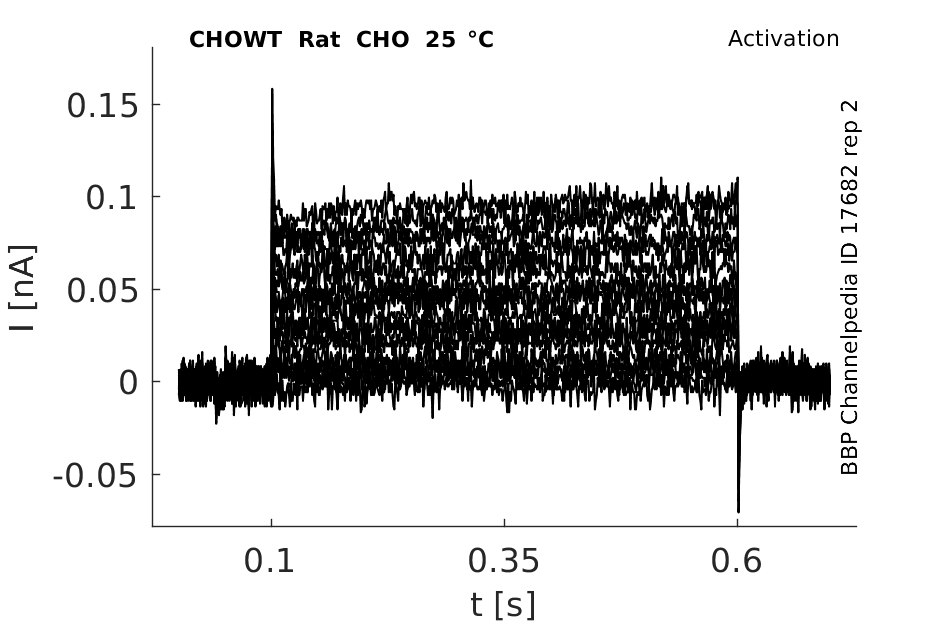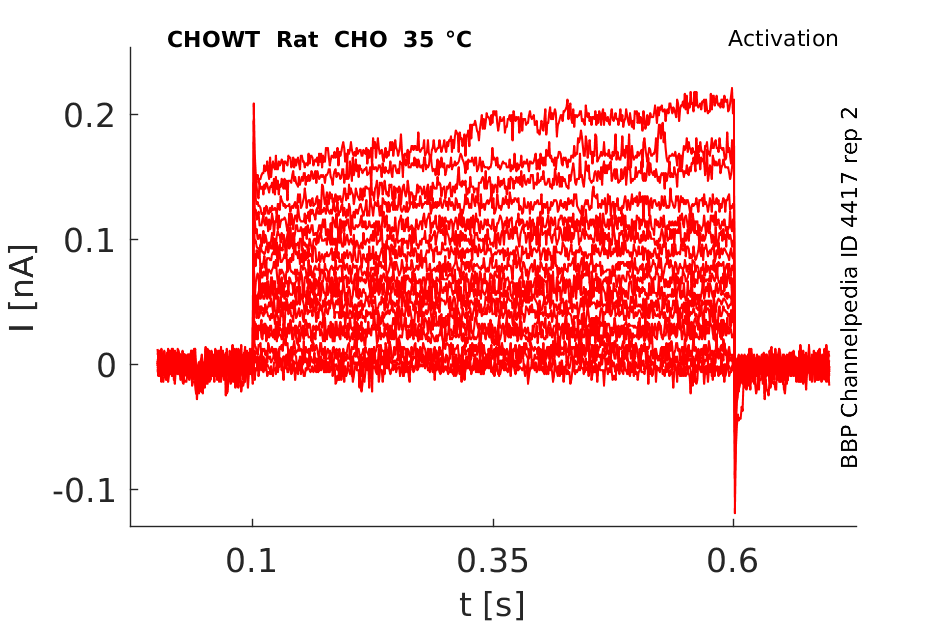CHO
Description: Chinese Hamster Ovary Cells
CHO cells are a line of epithelial-like cells that was initiated in 1957 by T.T. Puck and colleagues at the Department of Biophysics, University of Colorado Medical School in Denver, USA from a biopsy of an ovary of an adult Chinese hamster [1352]. There are several specific features that make the CHOcell line one of the most convenient solutions for reconstitution of mammalian ionchannels and related proteins: 1) it is a mammalian cell line; 2) they are adherent cells that make them easier to transfect compared to cell lines that grow in suspension; 3) cells are not electrotonically coupled and so are easy to voltage clamp, and 4) they express very little endogenous currents. [1353]
Experimental data
CHO cells |
||
|
Click for details 
15 °Cshow 73 cells |
Click for details 
25 °Cshow 233 cells |
Click for details 
35 °Cshow 122 cells |
TRPM4, KCNK5, Kir, Neglegible Ik.
References
PUCK TT
et al.
Genetics of somatic mammalian cells. III. Long-term cultivation of euploid cells from human and animal subjects.
J. Exp. Med.,
1958
Dec
1
, 108 (945-56).
Gamper N
et al.
The use of Chinese hamster ovary (CHO) cells in the study of ion channels.
,
2005 May-Jun
, 51 (177-85).
Lalik PH
et al.
Characterization of endogenous sodium channel gene expressed in Chinese hamster ovary cells.
Am. J. Physiol.,
1993
Apr
, 264 (C803-9).
Yarishkin OV
et al.
Endogenous TRPM4-like channel in Chinese hamster ovary (CHO) cells.
Biochem. Biophys. Res. Commun.,
2008
May
2
, 369 (712-7).
Beattie KA
et al.
Sinusoidal voltage protocols for rapid characterisation of ion channel kinetics.
J. Physiol. (Lond.),
2018
05
15
, 596 (1813-1828).
Credits
To cite this page: [Contributors] Channelpedia https://channelpedia.epfl.ch/wikipages/239/ , accessed on 2026 Jan 15